RAISING THE BAR
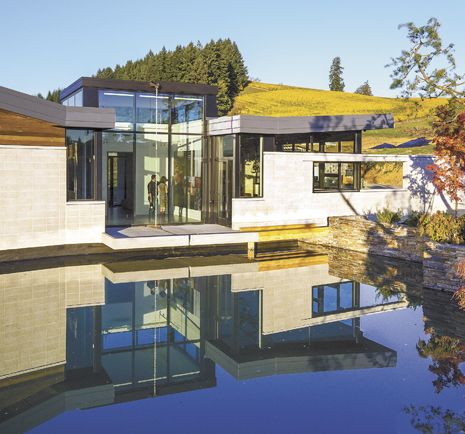
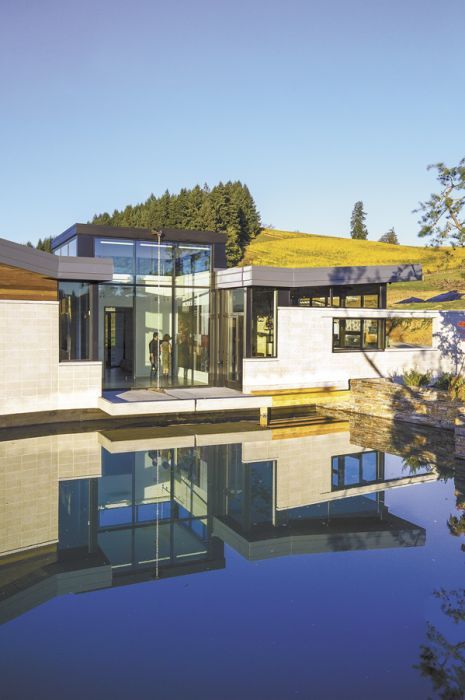
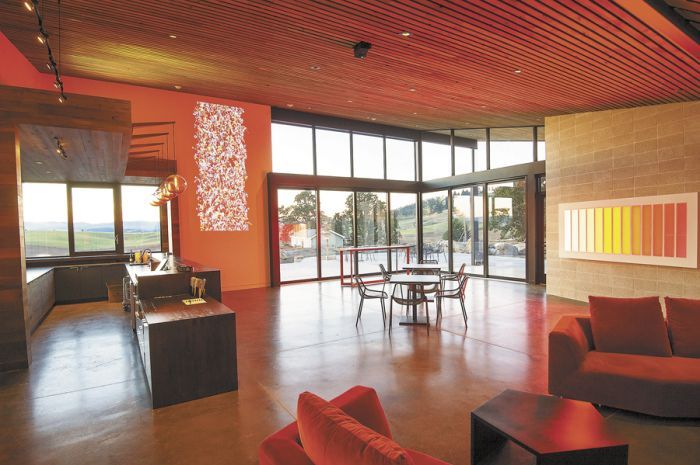
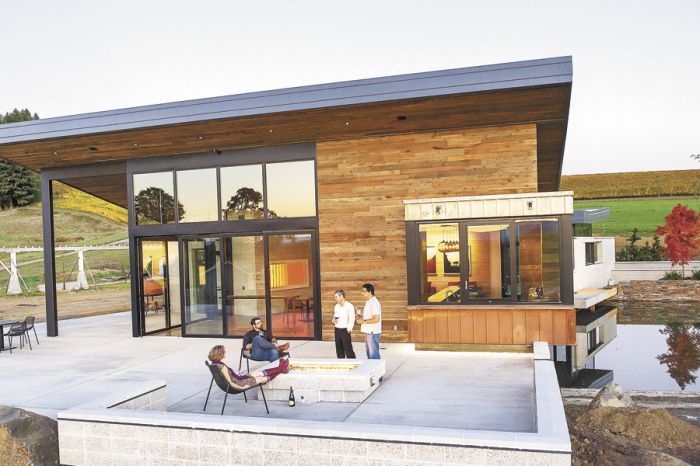
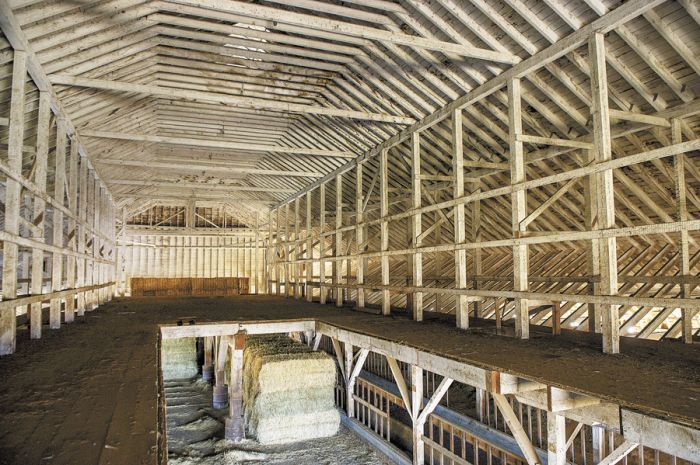
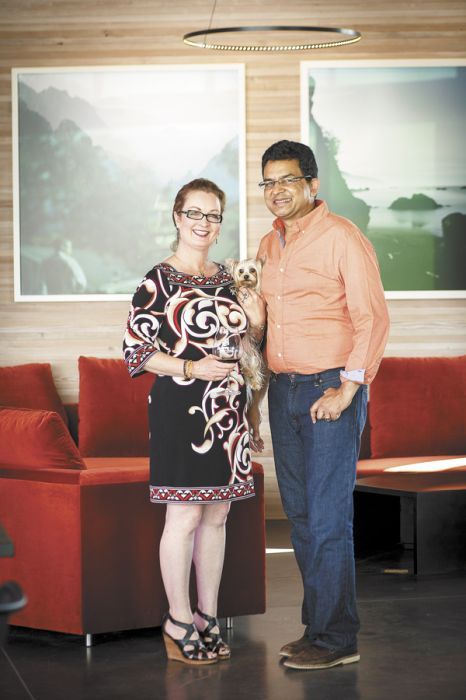
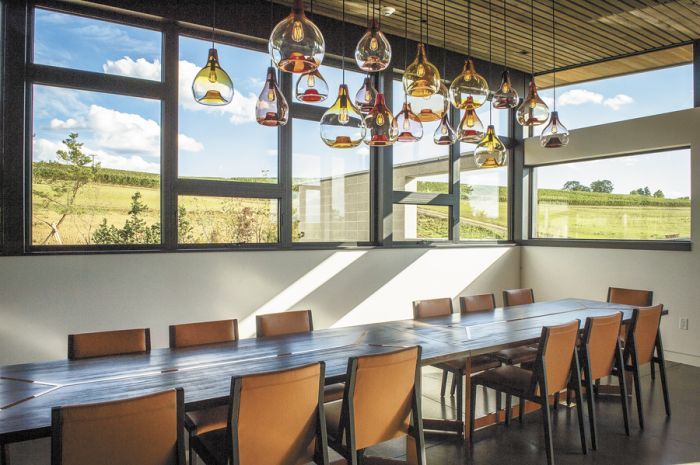
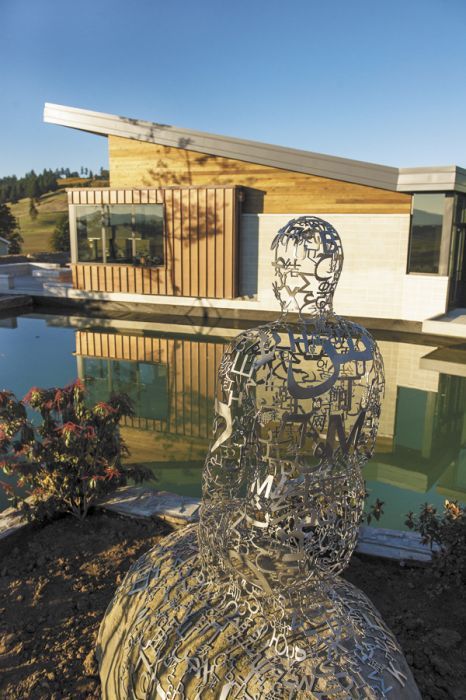
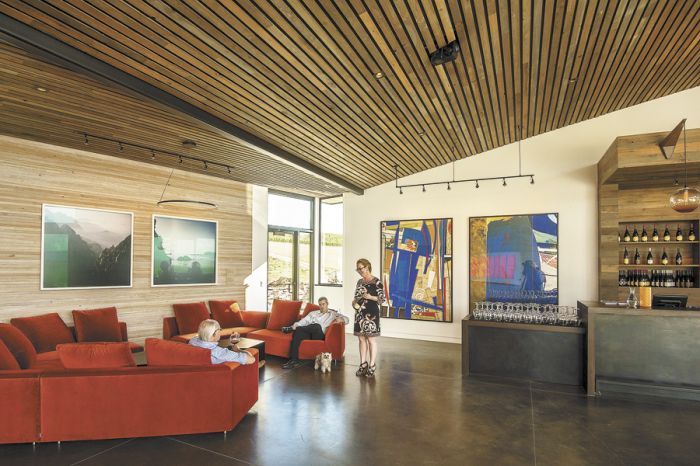
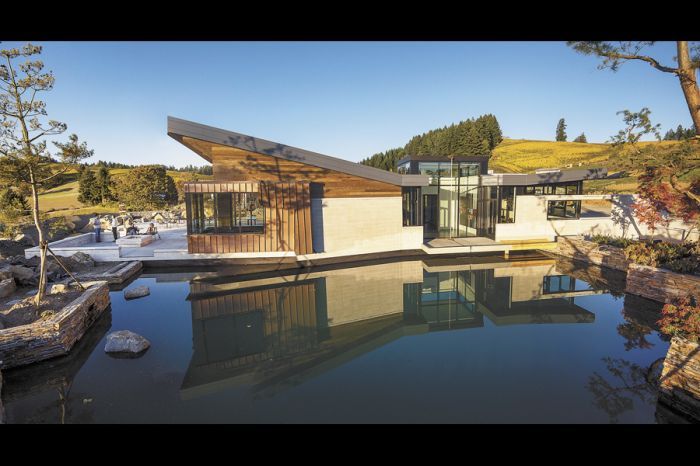
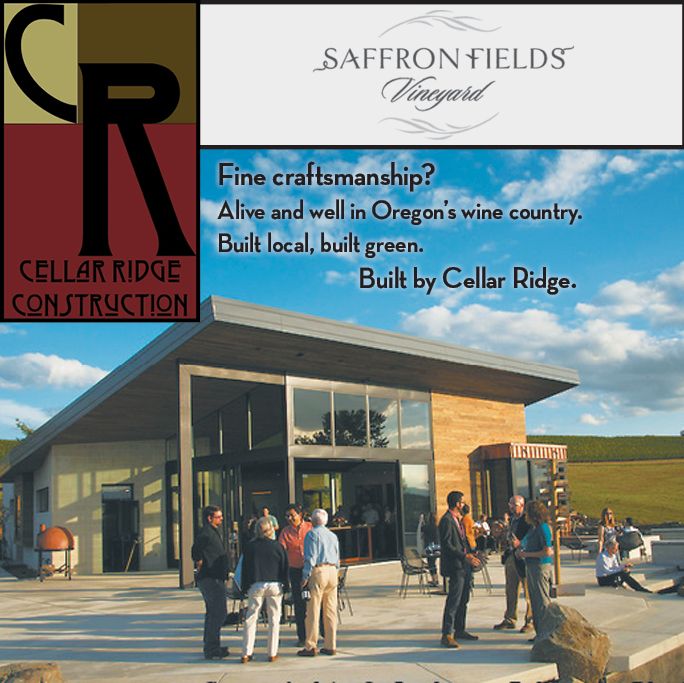
By Hilary Berg | Photos by Andrea Johnson
For more than a year, I’ve witnessed the incredible evolution of Saffron Fields — from the road. You see, I’m a neighbor; I live down the street and up the hill. Practically every day, I drive past what has transformed into a world-class vineyard and, now, a destination tasting room, just east of Yamhill.
I remember when owners Sanjeev Lahoti and Dr. Angela Summers planted the first 10 acres of Pinot Noir — all Pommard — in 2007, under the direction and management of Luke Pedotti of Results Partners. Two years later, they planted 12 more — consisting of Dijon clones 115 and 777 as well as Wädenswil.
Once the vines were in place, the couple tackled the barn, all 22,000 square feet. The former, historical Laughlin Dairy barn was too large and did not meet current construction and safety codes, so the Houston-based couple made the decision to take it apart and salvage the wood. A monumental task.
Board by board, the structure was meticulously deconstructed by Rich Mathis and Peter Braun of Wood is Wonderful Foundation in Sheridan. A remarkable feat to watch — from the road — the dismantling took almost two months. Half the wood was re-purposed for use in the tasting room’s construction and saved for a future winery; the other half served as payment to Mathis and Braun for their work on the project.
After the barn was stacked into organized piles last September, Lahoti, Summers and John Mead, of Cellar Ridge Custom Homes of McMinnville, broke ground on the 3,248-square-foot building. A year later, the tasting room is finished.
Saffron opened its doors to the public in mid-September, but it wasn’t until a month later, when the landscaping was closer to completion, that I made my official turn off Laughlin Road and up the drive to check out the neighborhood’s newest.
Knowing the gardens were a crucial part of the Saffron experience, I had high expectations for the design; all were met and more. The Japanese-style garden is a sight to see. Summers, an avid gardener, found design inspiration after visiting Tokyo and Kyoto. She was especially struck by the Japanese integration of interior and exterior as one continuous space.
The couple met world-renowned landscape architect Hoichi Kurisu in Houston after learning about the breadth of his work. His firm, Kurisu International, has designed intricate gardens across the country, including the Portland Japanese Garden — and now, Saffron Fields.
His vision and expertise are evident. The patios, totaling 2,215 square feet, incorporate flawlessly into the water features, including two ponds — one is named Thales after the Greek philosopher; the other, Helios, for the Titan Sun God. Massive granite boulders and unusual greenery — including black pines grown and meticulously pruned by Kurisu’s nursery for 30 to 40 years before being transplanted — create an exotic atmosphere enhanced by the Zen-style fire pit — keeping tasters toasty on this cool autumn day.
A series of three sculptures has been designed into the landscape. The most striking — and the only one to be placed — is Jaume Plensa’s “Tale Teller II,” a life-sized sculpture crafted from stainless steel and stone. For Summers, the piece embodies Saffron Fields’ essence. The figure is comprised letters from different languages, inviting viewers to sit and create their own narrative. A notable work, the Plensa was loaned to the Portland Art Museum while construction was executed.
Although I could have easily spent my entire visit exploring the gardens, I headed inside the tasting room, an equally stimulating space. Envisioning the building, Lahoti and Summers were inspired by architecture using glass, wood and water for their abilities to evoke emotion through fluidity and serenity.
Architect Richard Shugar, principal of 2fORM Architecture in Eugene, focused on two fundamental principles when designing Saffron: the structure being rooted in the landscape — like the vines — and the “Jewel Box” room as the heart and anchor of the building.
As I entered the main doors, the Jewel Box came into view. I immediately noticed the glass wall — connecting the interior with the exterior — revealing a cantilevering patio hovering over one of the ponds, giving the room a feeling of being suspended above the water.
In the future, the Jewel Box will showcase art exhibitions, but on this day, the space featured historical displays, illustrating the site’s agricultural past, the painstaking deconstruction of the barn and bios on Saffron staffers, all professionally achieved with the help of photographer/videographer Andrea Johnson.
Throughout the rest of the tasting room, I explored the couple’s personal collection of contemporary art from acclaimed artists. “Coded Spectrum” by Leo Villareal hangs on one wall with its light-emitting dancing diodes of color. Jennifer Steinkamp, Robert Rector, Justin Guariglia and others represent with impressive pieces, too. I, indeed, found myself studying the colors, textures and movement of each. I was fully engaged in the experience — something Summers aimed to encourage.
The interior’s design reflects Kurisu’s philosophy that interiors and exteriors should flow seamlessly rather than exist in separation. The building’s windows are key in accomplishing this with 12- and 8-foot sections retracting completely, framing the view of the rolling green hills creating its own spectacular piece of art — especially when the sun sets.
The incorporation of the old-growth Douglas fir brings new life to the former barn. Designed by Jessica Helgerson of Portland, the interior features the reclaimed wood on much of the walls and ceilings, adding a warm, amber element to the building.
While Summers and Lahoti specifically chose Helgerson for her insight on how to integrate an art collection into a space without overwhelming each piece, she succeeds on the whole with her interpretation of a modern-meets-organic atmosphere. Helgerson’s custom-designed furniture features flowing, wooden shapes with branch-like bases, and the light fixtures from Portland’s Esque Studios reflect the tranquility fluidity of the Japanese gardens.
Undoubtedly, as I explored the tasting room, I had a glass of wine in hand. Pinot Noir, of course.
Tony Rynders of Tendril Wines has been producing Saffron’s estate Pinot Noirs since its first vintage in 2010. Lahoti and Summers met Rynders at the 2005 International Pinot Noir Festival in McMinnville. Since the first crush, case production has grown from 50 to 900 cases in 2012, and two acres of Chardonnay were planted last year, adding diversity in the vineyard.
Chris Berg of Roots Wine Company makes Saffron’s vintage-inspired special bottlings such as Riesling. Berg has also has been crafting Saffron Pinot Noir since 2010, but under his own label as a vineyard-designate wine. Roots and Tendril are also joined by EIEIO in the production of single-vineyard Saffron Pinots under their respective brands and are available to sample in the tasting room.
In regard to the winery’s showcase wine, Saffron Fields 2010 Pinot Noir, Paul Gregutt of Wine Enthusiast describes it best, “a lush mash-up of aromas running from mint to blackberry to cola. It’s a wine of power and finesse that leads you down a most interesting flavor trail, with licorice and black tea dominating a long finish.”
I knew the wines would be exceptional before I arrived on that October day, as I had tasted most of them months before. As you know, Lahoti and Summers are my neighbors, and as it turns out, Chris Berg is my husband. He, too, has been driving past Saffron every day with great anticipation.
If only we can talk the neighbors into hosting a block party of sorts. I imagine other nearby wineries such as WillaKenzie, Deux Vert, Lenné, Beacon Hill, Soléna and the newest of all the neighbors, Kendall Jackson, would be there, too. I volunteer to make the event signage, so those who want to join in the fun and fabulous wine can easily find Saffron — from the road.
Experience the tasting room for yourself at 18748 N.E. Laughlin Road, Yamhill. Hours are daily, 11 a.m. to 5 p.m. For more details, call 503-662-5323 or visit www.saffronfields.com. A grand opening event is scheduled for Nov 23; check the website for information.










